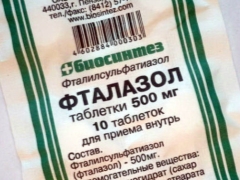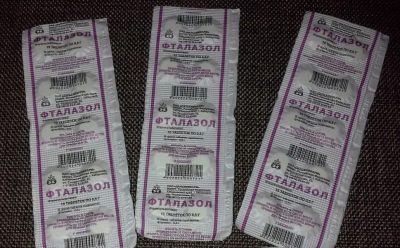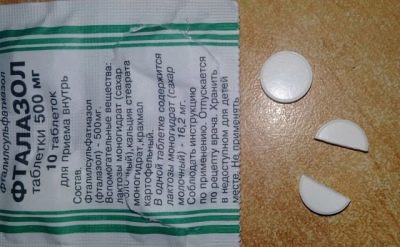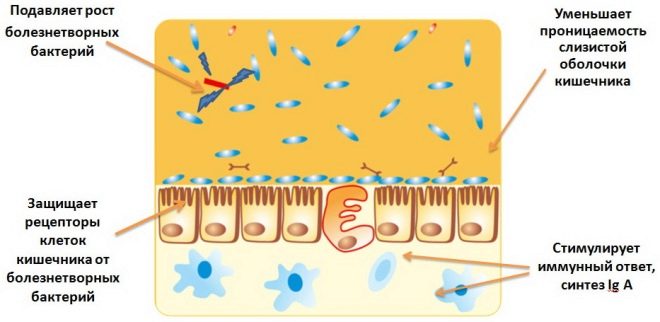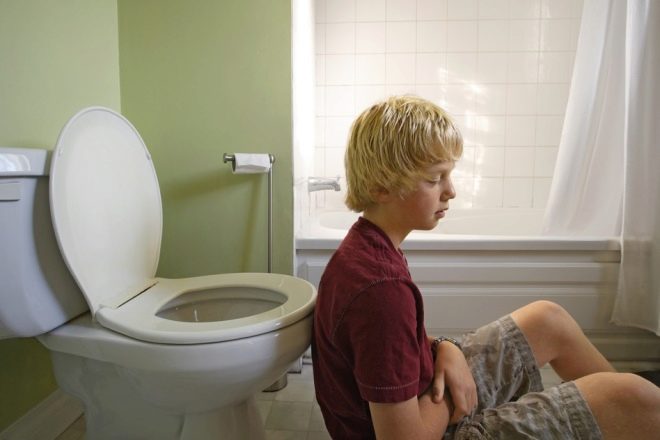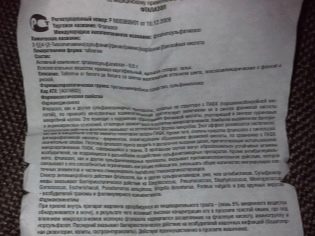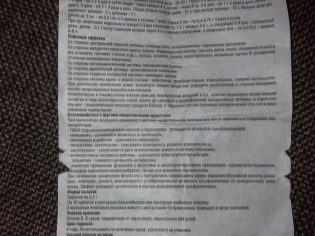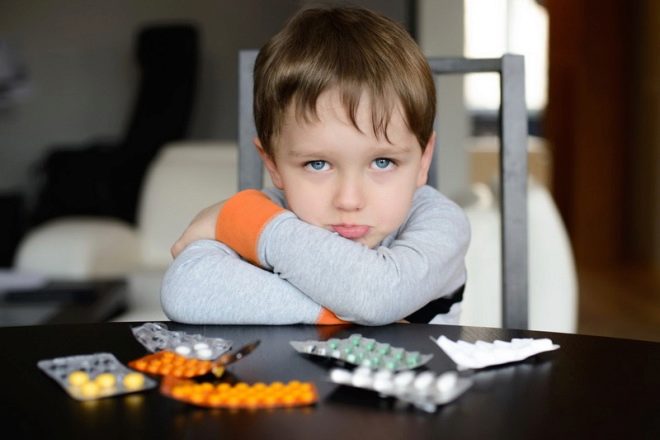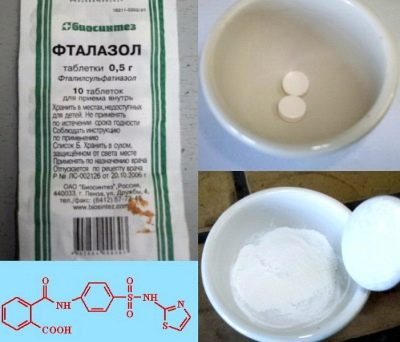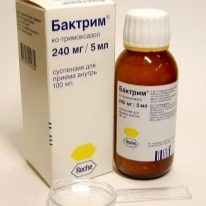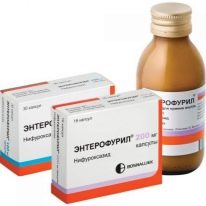Phthalazole for children: instructions for use
Diarrhea occurs in various diseases and is dangerous for the child’s body at high risk of dehydration. That is why it is important to quickly determine its cause and begin treatment. If loose stools appear due to a bacterial infection, antimicrobials are used, for example, Ftalazol. This medicine has been used for many decades and is given even to small children.
Release form
Ftalazol produces several Russian pharmaceutical companies, but only in one form. These are tablets that are usually sold in packs of 10 or 20 pieces, packaged in blisters or cellless shells. They have white color, sometimes with a slight yellowness. Such tablets are round and usually have a strip on which they can be divided into halves.
Composition
The main ingredient of the drug, which allows Phtalazol to affect the bacteria, is phthalylsulfathiazole. Its amount per tablet is 500 mg. Among the auxiliary inactive ingredients in the preparation are talc, potato starch and calcium stearate.
Operating principle
By its structure "Ftalazol" refers to sulfanilamide funds. The drug disrupts the development of microbes and interferes with their growth (this is a bacteriostatic effect) by blocking the synthesis of pyrimidine and purine compounds. This effect is due to the ability of Phthalazole to disrupt the formation of folic acid in bacterial cells.
The absorption of the drug in the gastrointestinal tract takes place very slowly and in an amount of not more than 5-10%, therefore, in the lumen of the intestine, the concentration of the drug is large and the drug acts, mainly locally. Under the influence of the normal intestinal flora, the active substance Ftalazol is split into several components: one of them is norsulfazole, which has antimicrobial properties. The drug does not accumulate and does not provoke addiction.
Although the spectrum of influence on pathogens in Phtalazole is narrower than that of antibiotics, the drug helps in the treatment of diseases provoked by shigella, pathogenic cocci, Proteus, Escherichia coli and pseudomonas. The medication also has an anti-inflammatory effect, since the tablets limit the movement of leukocytes and partially activate the synthesis of glucocorticoids.
Indications
The main reason for prescribing "Ftalazol" is diarrhea, which has been provoked by pathogenic bacteria. The tool is in demand for dysentery and other intestinal infections.
It can also be prescribed for chronic gastritis or ulcerative colitis, and for prophylactic purposes, the medicine is taken after intestinal surgery to prevent purulent complications.
From what age is appointed?
There is no age limit for the use of Ftalazol in children. Not so long ago, this medicine was the most popular remedy for diarrhea at any age, however, these days there are safer and more convenient drugs to use, so many doctors and manufacturers do not recommend giving Ftalazol to young patients under 3 years old. However, children of the first years of life such tablets are not contraindicated, therefore, if there is no more modern medicine on hand, Phalazole can also be treated with diarrhea.
Contraindications
"Ftalazol" should not be administered to patients who have hypersensitivity to its components or other sulfanilamide drugs. Tablets are also contraindicated in:
- blood disorders;
- acute hepatitis;
- diffuse toxic goiter;
- glomerulonephritis and other pathologies of the kidneys that caused renal failure;
- intestinal obstruction.
Since the medicament is ineffective against viruses, it is also not prescribed for rotavirus infection.
Side effects
After taking Phthalazole, some patients may experience headache, worsen mood, and dizziness. The digestive system can respond to nausea, diarrhea, stomatitis and other negative symptoms. Since the drug inhibits the intestinal flora, it can cause hypovitaminosis B.
Occasionally, the drug worsens blood counts, causes heart damage, pneumonia, or urolithiasis. In addition, “Ftalazol” can develop drug allergies, which often manifest nodular, spotty or other skin rashes. If any of these negative symptoms occur, you should inform the doctor about it and stop the medication.
Instructions for use
A pill is offered to the child to swallow and drink it with water, and if it does not work, it is permissible to grind the medicine into powder and dilute in a spoon with a small amount of pure water. Doses of "Ftalazol" and the mode of use of tablets depend on the diagnosis.
If a child under three years old is diagnosed with acute dysentery, he is prescribed a course of Ftalazole for up to seven days at the rate of 200 mg / kg daily dosage. Having calculated the dose per day, the medicine is given in three doses. If such an infection is detected in a patient of 3-7 years, the frequency of taking the pills is increased up to four times, and the single dose will be 500 mg. A child of 7-12 years at one time give 500-750 mg (1-1.5 tablets), and over the age of 12 years, use the dosage for adults.
For other indications to receive "Phthalazole" use a different treatment regimen. According to this scheme, in the first two or three days the daily dosage is 100 mg / kg. It is divided into several techniques with an interval of 4 hours and a break for the night. Then go to the reception every 6-8 hours at 200-500 mg. The course of therapy lasts up to seven days. The medication is no longer given after 12 hours without loose stools.
Overdose
Exceeding the dose of "Ftalazol" can enhance the adverse reactions of the drug, as well as cause a lack of folic acid, which will affect the blood picture in the general analysis. To eliminate these effects, drug withdrawal and symptomatic therapy are needed.
Interaction with other drugs
If levomycetin preparations are given along with Ftalazol, this will increase the risk of agranulocytosis, and when combined with nitrofurans, the likelihood of anemia increases. When prescribed with indirect anticoagulants, their effect will increase, and simultaneous treatment with oxacillin will reduce its antibacterial effect. At the same time, synergism is noted with other antibiotics in Phtalazol, and local anesthetics (novocaine, dikain and others) can inactivate the antibacterial effect of tablets.
Terms of sale and storage
To buy "Ftalazol" in a pharmacy, you need a prescription, and the cost of tablets is influenced by the manufacturer and the amount of medicine in a pack. The price of 10 tablets is usually from 12 to 20 rubles. Keep them at home should be in a dry place at temperatures below +25 degrees. The drug must be inaccessible to kids.and its shelf life is 4 years or 5 years.
Reviews
Most of the reviews about the use of "Phthalazole" in childhood call the drug safe and highly effective. The advantages of mom's drugs include the possibility of using even the smallest patients, low cost, no addiction and rare side effects.However, many parents call the solid form very inconvenient, because Ftalazol has no child forms (syrup, drops), and the tablet is hard and bitter.
Analogs
Drugs with the same active ingredient as Ftalazol are not manufactured, therefore, if necessary, replacing the tablets with an analogue, the doctor usually prescribes another antimicrobial agent, for example, prescribe using "Enterola"," Bactrima ","Furazolidone" or "Enterofuril».
Also in case of diarrhea, preparations of other groups can be used, among which sorbents are the most popular (“Smecta», «Enterodez"," Polysorb MP ","Enterosgel") And probiotics (" Linex "," Bifiform "," Atsipol ","Baktisubtil»).
However, all these tools differ in active ingredients, dosage forms and age range, therefore, in case of diarrhea in a child, it will be correct to first consult a doctor and select the appropriate drug together with a specialist.
For information on stopping diarrhea in a child, see the next video.
